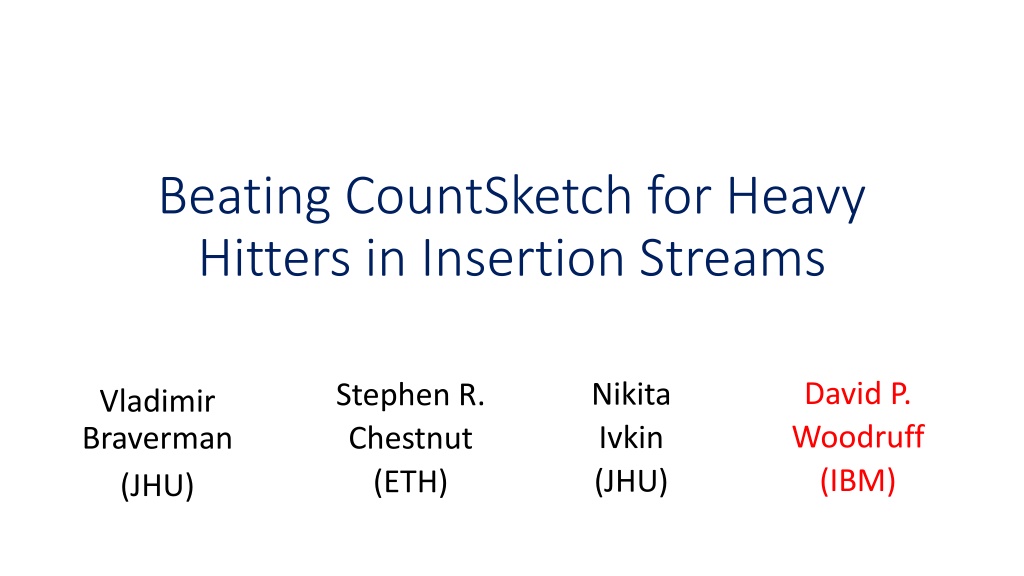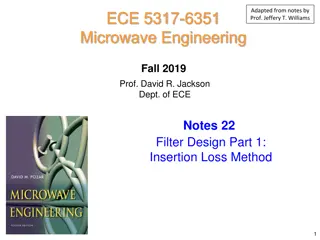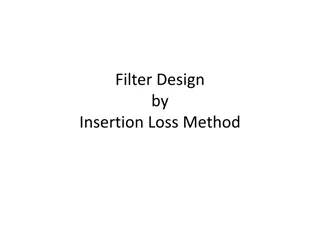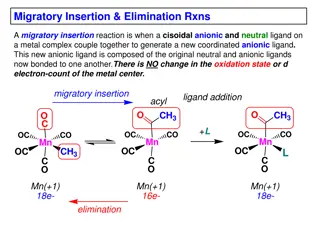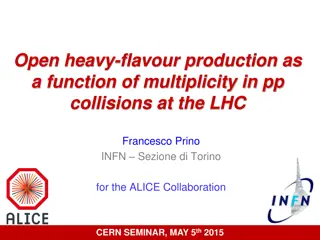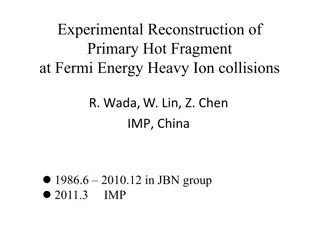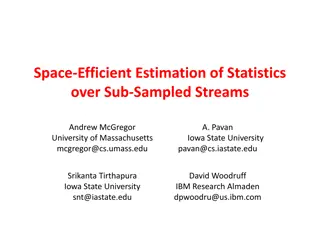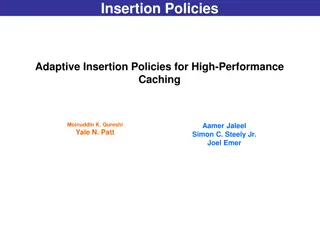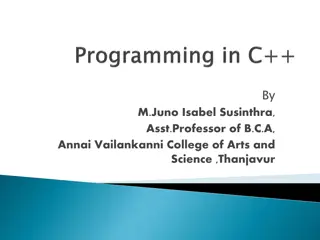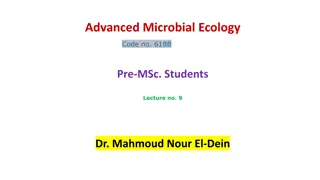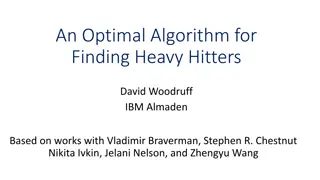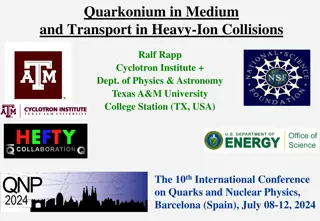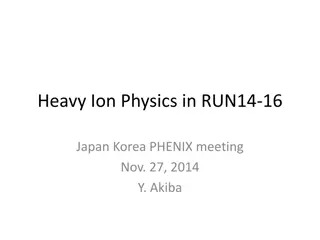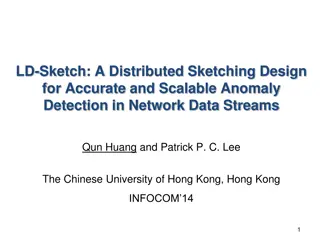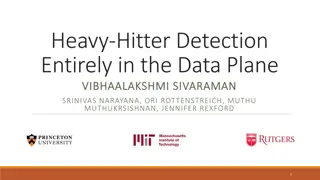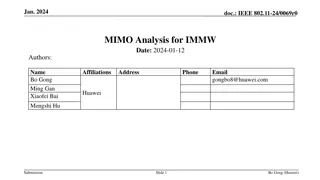Advanced Techniques for Heavy Hitters Detection in Insertion Streams
Beating CountSketch algorithms, like those presented by David P. Woodruff and team, offer innovative solutions for identifying heavy hitters in insertion streams with minimal space complexity. Guarantees such as L1 and L2 outputs and the CountSketch approach are explored to achieve efficient heavy hitters detection. Known space bounds, lower bounds, and the latest results showcasing improved algorithms utilizing O(log n log log n) bits of space are discussed.
Download Presentation

Please find below an Image/Link to download the presentation.
The content on the website is provided AS IS for your information and personal use only. It may not be sold, licensed, or shared on other websites without obtaining consent from the author. Download presentation by click this link. If you encounter any issues during the download, it is possible that the publisher has removed the file from their server.
E N D
Presentation Transcript
Beating CountSketch for Heavy Hitters in Insertion Streams David P. Woodruff (IBM) Nikita Ivkin (JHU) Stephen R. Chestnut (ETH) Vladimir Braverman (JHU)
Streaming Model 4 3 7 3 1 1 2 Stream of elements a1, , am in [n] = {1, , n}. Assume m = poly(n) One pass over the data Minimize space complexity (in bits) for solving a task Let fj be the number of occurrences of item j Heavy Hitters Problem: find those j for which fj is large
Guarantees l1 guarantee output a set containing all items j for which fj m the set should not contain any j with fj ( - ) m l2 guarantee F2= jfj output a set containing all items j for which fj 2 F2 the set should not contain any j with fj 2 ( - ) F2 2 f1, f2 f3 f4 f5 f6 This talk: is a constant, = /2 l2 guarantee is much stronger than the l1 guarantee Suppose frequency vector is ( ?, 1, 1, 1, , 1) Item 1 is an l2-heavy hitter but not an l1-heavy hitter
CountSketch achieves the l2guarantee [CCFC] Assign each coordinate i a random sign (i) 2 {-1,1} Repeat this hashing scheme O(log n) times Output median of estimates Ensures every fj is approximated up to an additive (F2/B)1/2 Gives O(log2 n) bits of space Randomly partition coordinates into B buckets, maintain cj = i: h(i) = j (i) fi in j- th bucket f1 f2 f3 f4 f5 f6 f7 f8 f9 f10 i: h(i) = 2 (i) fi . . . Estimate fi as (i) ch(i)
Known Space Bounds for l2 heavy hitters CountSketch achieves O(log2 n) bits of space If the stream is allowed to have deletions, this is optimal [DPIW] What about insertion-only streams? This is the model originally introduced by Alon, Matias, and Szegedy Models internet search logs, network traffic, databases, scientific data, etc. The only known lower bound is (log n) bits, just to report the identity of the heavy hitter
Our Results We give an algorithm using O(log n log log n) bits of space! Same techniques give a number of other results: (F2 at all times) Estimate F2 at all times in a stream with O(log n log log n) bits of space Improves the union bound which would take O(log2 n) bits of space Improves an algorithm of [HTY] which requires m >> poly(n) to achieve savings (L -Estimation) Compute maxi fi up to additive ( F2)1/2 using O(log n log log n) bits of space (Resolves IITK Open Question 3)
Simplifications Output a set containing all items i for which fi 2 F2 for constant There are at most O(1/ ) = O(1) such items i Hash items into O(1) buckets All items i for which fi 2 F2 will go to different buckets with good probability Problem reduces to having a single i*in {1, 2, , n} with fi* ( F2)1/2
Intuition Suppose first that fi n1/2log n and fi in {0,1} for all i in {1, 2, , n} \ {i*} For the moment, also assume that we have an infinitely long random tape Assign each coordinate i a random sign (i) 2 {-1,1} Randomly partition items into 2 buckets Maintain c1 = i: h(i) = 1 (i) fi and c2 = i: h(i) = 2 (i) fi Suppose h(i*) = 1. What do the values c1 and c2 look like?
Eventually, fi* > 2??1/2, ? ?? ?? ???? ? ?? ?????? ???????? ? ! Only gives 1 bit of information. Can t repeat log n times in parallel, but can repeat log n times sequentially! c1 = (i*) fi* + i i , h i =1 i fiand c2 = i i ,h i =2 i fi c1 - (i*) fi* and c2 evolve as random walks as the stream progresses (Random Walks) There is a constant C > 0 so that with probability 9/10, at all times, |c1 - (i*) fi*| < Cn1/2 and |c2| < Cn1/2
Repeating Sequentially Wait until either |c1| or |c2| exceeds Cn1/2 If |c1| > Cn1/2 then h(i*) = 1, otherwise h(i*) = 2 This gives 1 bit of information about i* (Repeat) initialize 2 new counters to 0 and perform the procedure again! Assuming fi = (n1/2log n), we will have at least 10 log n repetitions, and we will be correct in a 2/3 fraction of them (Chernoff) only a single value of i* whose hash values match a 2/3 fraction of repetitions
Gaussian Processes We don t actually have fi n1/2log n and fi in {0,1} for all i in {1, 2, , n} \ {i*} Fix both problems using Gaussian processes (Gaussian Process) Collection {Xt}t in T of random variables, for an index set T, for which every finite linear combination of random variables is Gaussian Assume E[Xt] = 0 for all t Process entirely determined by covariances E[XsXt] Distance function d(s,t) = (E[|Xs-Xt|2])1/2 is a pseudo-metric on T (Connection to Data Streams) Suppose we replace the signs (i) with normal random variables g(i), and consider a counter c at time t: c(t) = i g(i) fi(t) fi(t) is frequency of item i after processing t stream insertions c(t) is a Gaussian process!
Chaining Inequality [Fernique, Talagrand] Let {Xt}t in T be a Gaussian process and let T0 T1 T2 T be such that T0 = 1 and Ti 22i for i 1. Then, 2i/2d(t,Ti) E sup t TXt O 1 sup t T i 0 How can we apply this to c(t) = ig(i) fi(t)? Let F2t be the value of F2after t stream insertions Let the Tibe a recursive partitioning of the stream where F2(t) changes by a factor of 2
a1 a2 a3 a4 a5 at am F2 m 2 at is the first point in the stream for which F2t Apply the chaining inequality! T0= t Let Ti be the set of 22i times t1,t2, ,t22i in the stream such that tj is the first point in the stream with 22i j F2 m F2tj Then T0 T1 T2 T,and T0 = 1, and Ti 22i for i 1
Applying the Chaining Inequality Let {Xt}t in T be a Gaussian process and let T0 T1 T2 T be such that T0 = 1 and Ti 22i for i 1. Then, 2i/2d(t,Ti) E sup t TXt O 1 sup t T i 0 Same behavior as for random walks! d(t,Ti) = (E [min tj ?? |c(t) c(tj)|2])1/2 (?2 22?)1/2 i 0 2i/2(?2 Hence, E sup 22?)1/2 = O(F21/2) t TXt O 1 sup t T
Removing Frequency Assumptions We don t actually have fi n1/2log n and fj in {0,1} for all j in {1, 2, , n} \ {t} Gaussian process removes the restriction that fj in {0,1} for all j in {1, 2, , n} \ {t} The random walk bound of Cn1/2 we needed on counters holds without this restriction 1/2log n to learn log n bits about the heavy hitter But we still need fi F2 How to replace this restriction with fi ( F2) 1/2? Can assume is an arbitrarily large constant by standard transformations
Amplification Create O(log log n) pairs of streams from the input stream (streamL1 , streamR1), (streamL2 , streamR2), , (streamLlog log n , streamRlog log n) For each j in O(log log n), choose a hash function hj :{1, , n} -> {0,1} streamLj is the original stream restricted to items i with hj(i) = 0 streamRj is the remaining part of the input stream maintain counters cL = i: hj(i) = 0 g(i) fi and cR = i: hj(i) = 1 g(i) fi (Chaining Inequality + Chernoff) the larger counter is usually the substream with i* The larger counter stays larger forever if the Chaining Inequality holds Run algorithm on items with counts which are larger a 9/10 fraction of the time Expected F2 value of items, excluding i*, is F2/poly(log n), so i* is heavier
Derandomization We don t have an infinitely long random tape We need to (1) derandomize a Gaussian process (2) derandomize the hash functions used to sequentially learn bits of i* We achieve (1) by (Derandomized Johnson Lindenstrauss) defining our counters by first applying a Johnson-Lindenstrauss (JL) transform [KMN] to the frequency vector, reducing n dimensions to log n, then taking the inner product with fully independent Gaussians (Slepian s Lemma) counters don t change much because a Gaussian process is determined by its covariances and all covariances are roughly preserved by JL For (2), derandomize an auxiliary algorithm via a reordering argument and Nisan s PRG [I]
Conclusions Beat CountSketch for finding l2-heavy hitters in a data stream Achieve O(log n log log n) bits of space instead of O(log2 n) bits New results for estimating F2 at all points and L - estimation Questions: Is this a significant practical improvement over CountSketch as well? Can we use Gaussian processes for other insertion-only stream problems? Can we remove the log log n factor?
